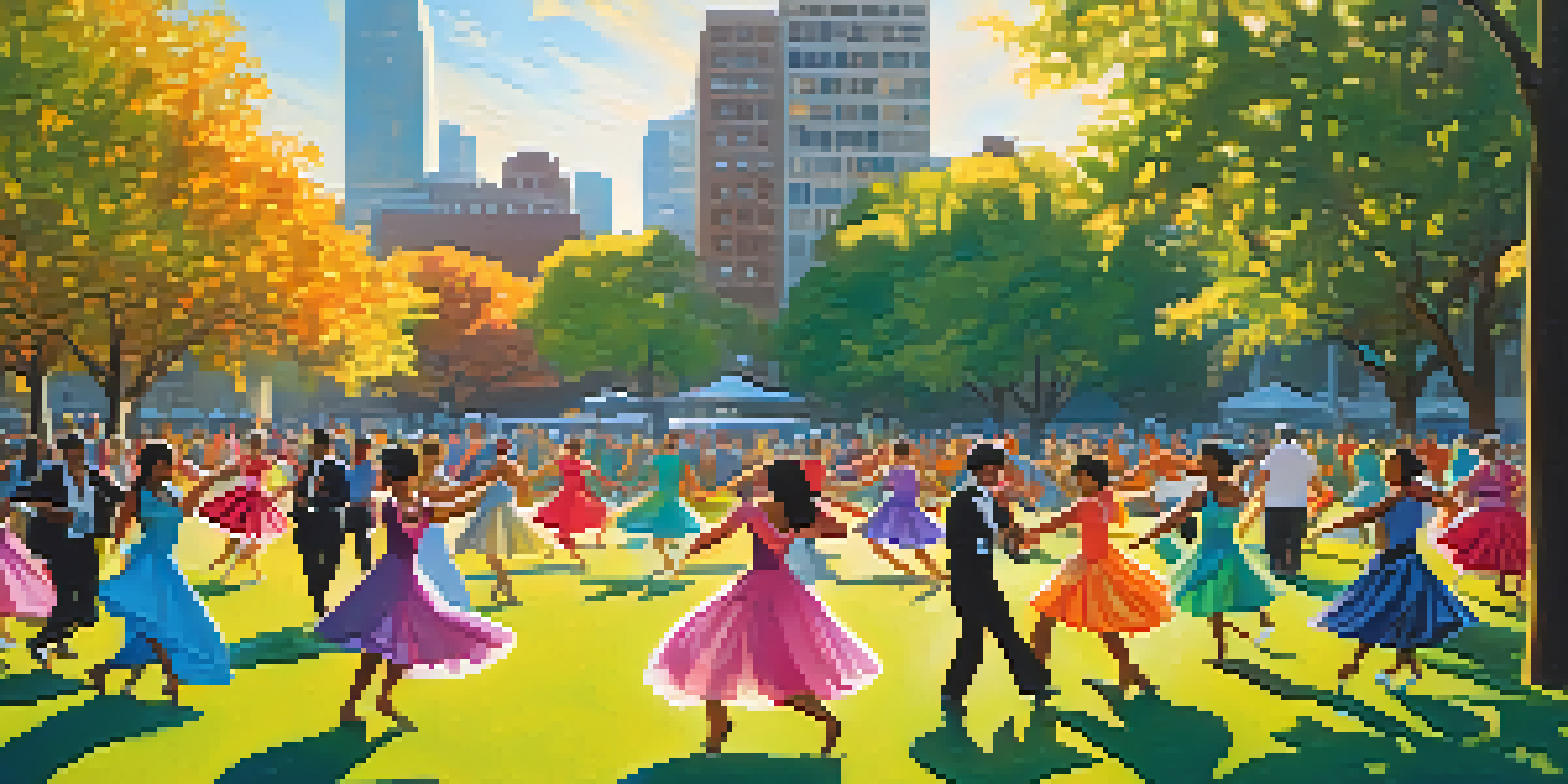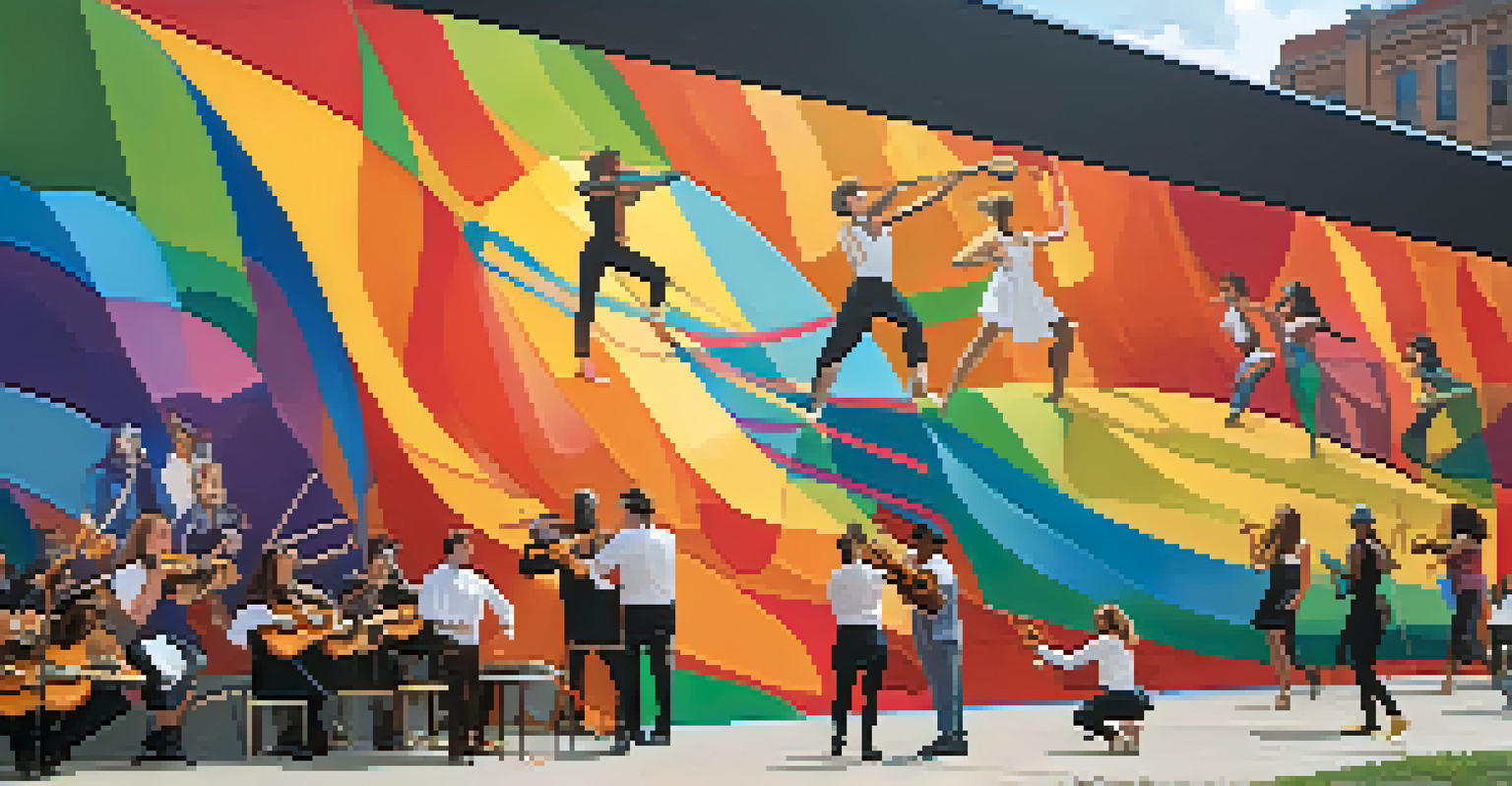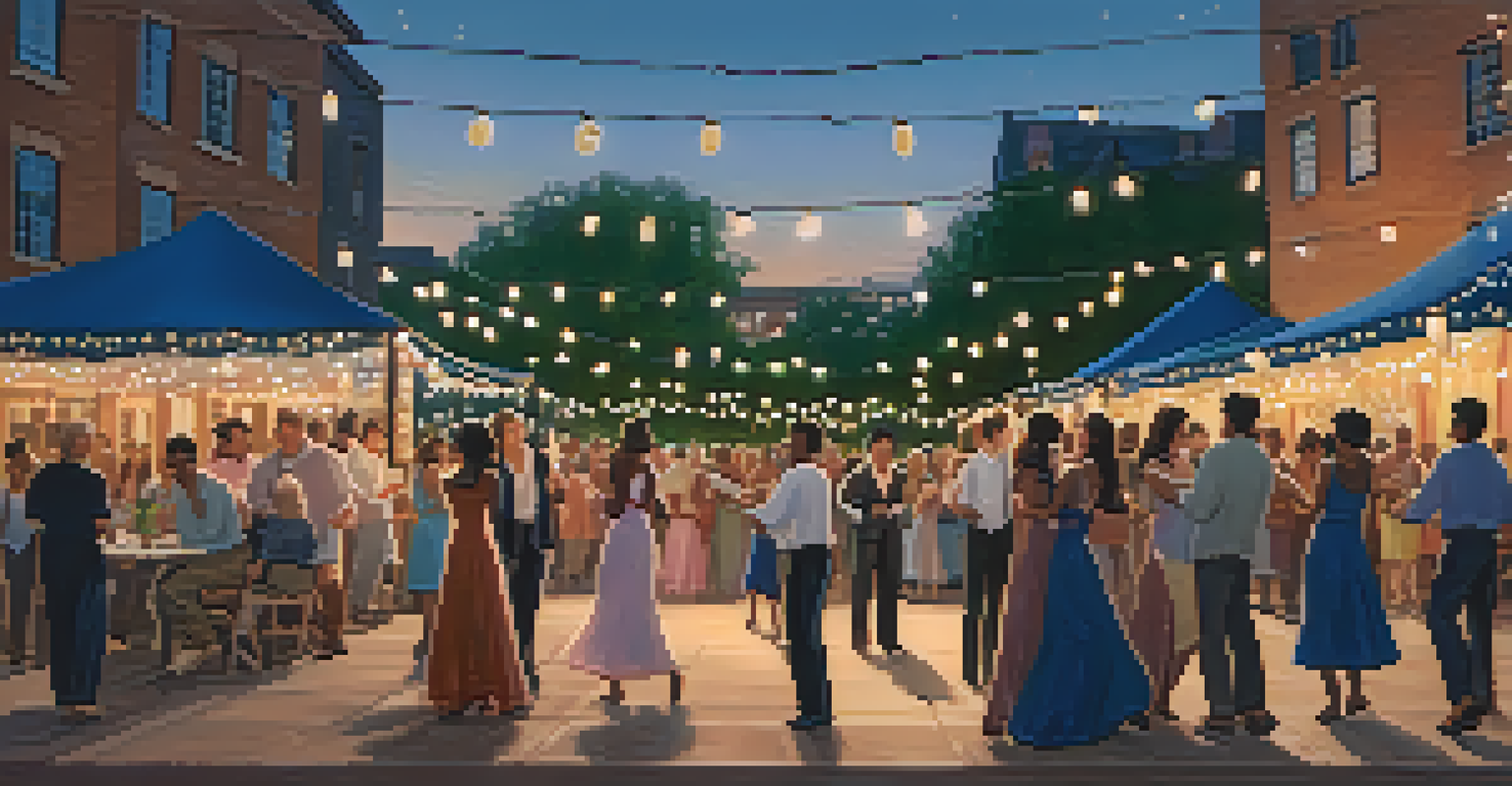How Dance Performances Transform Urban Public Spaces

The Power of Dance in Public Spaces
Dance has an incredible ability to bring people together, creating shared experiences in urban environments. When dancers perform in public spaces, they invite passersby to stop, watch, and even participate, fostering a sense of community. This spontaneous interaction can transform a mundane street corner into a lively gathering spot, encouraging social connections.
Dance is the hidden language of the soul.
Moreover, public dance performances can break down barriers, making art accessible to everyone. Unlike traditional theater, which often requires tickets and specific venues, dance in public spaces invites all demographics to enjoy and engage with the performance. This inclusivity is vital in diverse cities, where art can bridge cultural gaps.
In essence, dance performances serve as a reminder of the joy and creativity that exist within urban life. They can uplift spirits, spark conversations, and create memories that resonate long after the music stops.
Creating Vibrant Atmospheres with Movement
The energy of dance can dramatically alter the atmosphere of a public space. When dancers take to the streets, they infuse the environment with rhythm and movement, captivating the attention of onlookers. This transformation often leads to a more vibrant and energized feeling within the community, as people become more engaged with their surroundings.

For example, a performance in a city park can turn a quiet afternoon into a lively celebration, with families, friends, and even strangers coming together to enjoy the spectacle. The act of dancing can inspire others to join in, creating a ripple effect that enhances the communal experience. It's not just about watching; it's about feeling, moving, and connecting.
Dance Unites Communities
Public dance performances create shared experiences that foster social connections and a sense of belonging among diverse groups.
This dynamic interaction can lead to a greater appreciation for public spaces, encouraging citizens to utilize them more fully. When people see these areas as platforms for creativity and expression, they are more likely to revisit and engage with them.
Dance as a Tool for Urban Regeneration
Urban regeneration often focuses on revitalizing neglected or underused spaces, and dance can play a critical role in this process. By introducing performances to these areas, cities can breathe new life into forgotten corners. This not only attracts attention but also fosters a renewed sense of pride among local residents.
Art is not a thing; it is a way.
For instance, a once-abandoned square can be transformed into a bustling hub of activity through scheduled dance events. This revitalization helps to change the perception of these spaces, showing that they can be vibrant, welcoming, and full of life. Over time, the presence of dance can encourage further investment and development in the area.
Ultimately, incorporating dance into urban planning can create a more dynamic and inclusive city. It emphasizes the importance of art in public life and encourages municipalities to think creatively about how they use their spaces.
Fostering Community Identity Through Dance
Dance performances often reflect the cultural identity of a community, showcasing its unique traditions and stories. This expression of heritage can strengthen community bonds and foster a sense of belonging among residents. By celebrating local culture through dance, public spaces become a canvas for storytelling and connection.
When communities come together to share their dance traditions, they create an atmosphere of pride and unity. This shared experience can help to instill a sense of identity, making public spaces not just sites of performance but also symbols of community values and heritage. It's a beautiful way to honor the past while embracing the future.
Dance Revitalizes Urban Spaces
Integrating dance into urban planning can transform neglected areas into vibrant hubs, encouraging community pride and engagement.
Furthermore, dance can encourage participation from diverse community members, including those who may not typically engage in public life. This inclusivity helps build bridges between different cultures, enriching the community’s overall tapestry.
Encouraging Health and Wellbeing Through Movement
Dance is not just an art form; it’s also a powerful tool for promoting health and wellbeing. Engaging in dance, whether as a performer or spectator, encourages physical activity and boosts mental health. Public performances can inspire people to get moving, leading to a more active lifestyle and improved community health.
Moreover, the joy of watching a dance performance can elevate mood and reduce stress, providing a much-needed escape from daily routines. When people gather to enjoy dance, they share laughter, smiles, and collective joy, which contributes to their overall wellbeing. This communal experience fosters a supportive environment that encourages individuals to prioritize their health.
Incorporating dance into public life ultimately benefits not just individuals but the community as a whole. Healthier, happier residents contribute to a more vibrant, resilient urban environment.
Dance as a Catalyst for Artistic Collaboration
Dance performances in public spaces often lead to innovative collaborations between artists from different disciplines. Musicians, visual artists, and performers may come together to create immersive experiences that captivate audiences. This collaborative spirit enhances the cultural landscape of urban areas and fosters creativity.
For instance, a dance performance accompanied by live music or interactive art installations can engage multiple senses, creating a richer experience for spectators. Such collaborations not only elevate the quality of the performance but also encourage artists to explore new creative avenues. This synergy can lead to more dynamic and memorable public events.
Dance Promotes Wellbeing
Participating in or watching dance enhances physical activity and mental health, contributing to a happier, healthier community.
Ultimately, these artistic partnerships can stimulate a culture of creativity within the community, inspiring others to participate and contribute their talents. This can lead to a flourishing arts scene that benefits everyone.
Sustainability and Dance in Urban Spaces
As cities increasingly focus on sustainability, dance can play a role in promoting eco-friendly initiatives. Public dance performances can raise awareness about environmental issues, encouraging communities to think critically about their impact on the planet. This blend of art and advocacy can inspire action and positive change.
For example, a dance event that highlights themes of nature and conservation can engage audiences in meaningful discussions about sustainability. These performances can highlight the relationship between urban life and the natural environment, prompting individuals to consider how they can contribute to a healthier planet. Art becomes a vehicle for education and awareness.

Incorporating sustainable practices into public dance performances can also set a precedent for future events. By prioritizing eco-friendly approaches, communities demonstrate their commitment to a sustainable future, reinforcing the idea that art and environmental responsibility can coexist harmoniously.